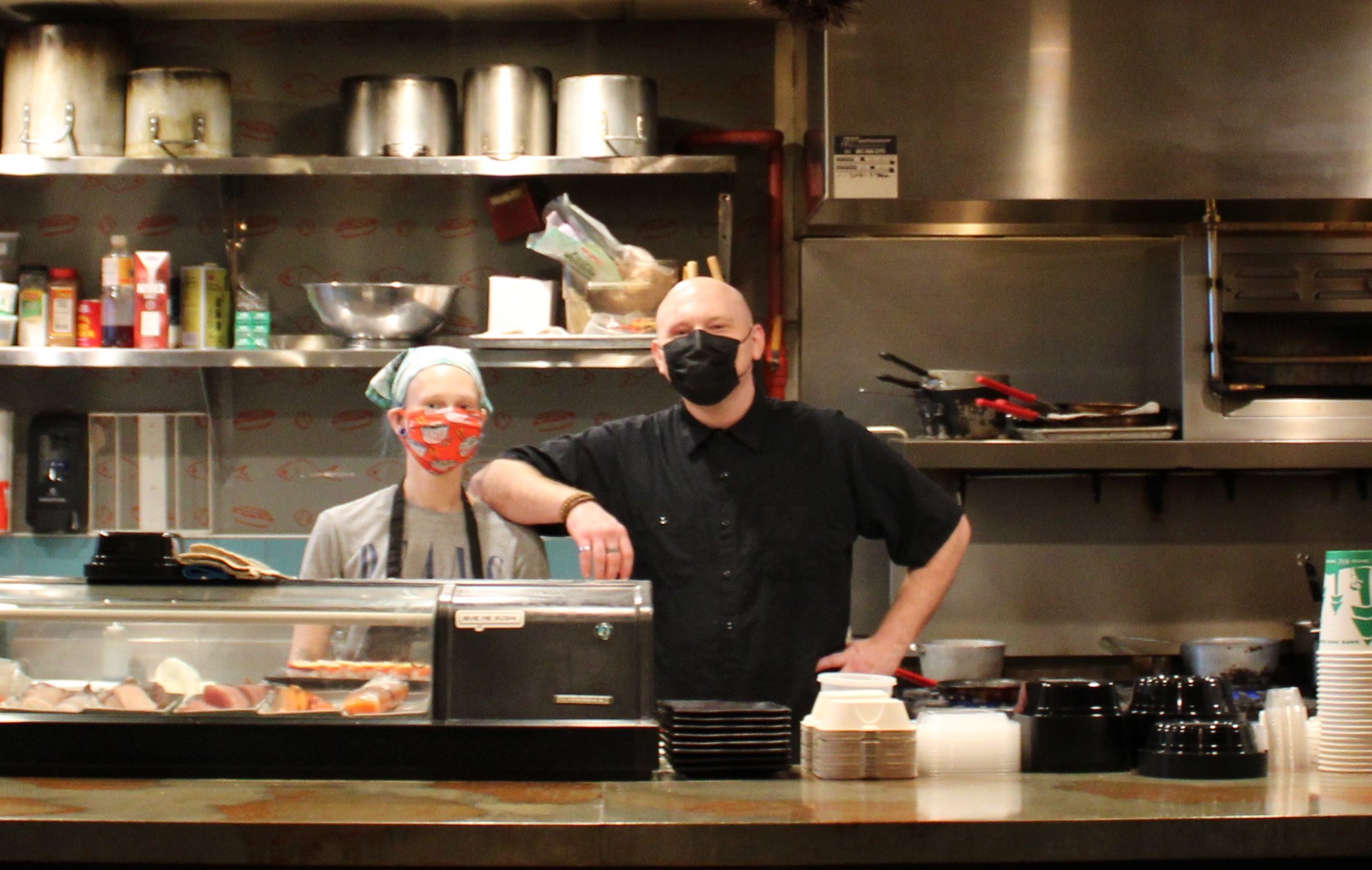
Kyatchi restaurant in St. Paul’s Lowertown district has embraced the city’s new minimum-wage ordinance.

Share
As I settled into a comfortable spot in Kyatchi’s dining room, I remembered all the previous times I had been to this restaurant to enjoy the ramen and hot dog with yakisoba noodles. It was a nostalgic feeling because it had been a couple of years since I had gone inside and ordered from the menu.
Before I placed my order, I met with Kyatchi manager Trevor Garcia to hear about the benefits of him receiving a livable wage while working in the restaurant industry and why he loves working at Kyatchi.
“I fell in love with the Kyatchi culture because it is very different from other bars and restaurants,” Garcia said. “I take pride in the food and service. We have time to teach people about our menu and give them an experience.”
Not only is the customer service great, but even on a slow night the staff is guaranteed pay. That’s because Kyatchi owner Sam Peterson decided years ago, when the City of Minneapolis began discussions about increasing the citywide minimum wage, to sit down and look at his numbers. He knew he would make it work and came up with a dollar amount to increase revenue for the Kyatchi Minneapolis location. He started paying the staff $15.00 per hour at that time and had zero pushback from the staff or his customers.

“As a business owner I can make this (minimum-wage increase) work,” Peterson said of his response at the time. “This can be done. You can have a successful business and pay your people well and still make a profit.”
The profit increase was the reason Kyatchi was able to open its St. Paul location four years ago, creating opportunities for more customers to be able to enjoy their food.
As I pondered Peterson’s words, I thought of the many businesses that have been in a bind during the pandemic and have survived, barely survived or are now shut down. The City of St. Paul’s first annual minimum-wage increase is around the corner on July 1, 2021, and I acknowledge the challenges and difficulties this can create for employers within the city.
Yet I also think about how families have fared during this time, how we are all in this together and how no one has been exempted from COVID-19. Employers need to earn a profit, and employees need to earn livable wages to sustain their families.
How did Kyatchi rise to the challenge when they reopened for indoor dining? Kyatchi’s owner decided to increase food prices by 19% and added a no-tipping policy for indoor dining, so the restaurant could maintain its ability to pay employees a livable wage.
The new approach “prevents a high employee-turnover rate and gives them passion for the job,” Garcia said. “It also decreases anxiety because a steady paycheck really helps people to live their lives and have money management.”
You can review the hourly minimum wage increase on the City of St. Paul’s website, which displays the four business sizes: Macro, Large, Small, and Micro. The Minimum Wage Ordinance rolled out in early 2020, and will bring the first wage increase this July. The wage increases will continue over the next three to seven years, depending on the business size, in order to reach the full $15.00 per hour.
The Minimum Wage Ordinance also includes youth employees, 14-17 years of age, who must be paid not less than eighty-five percent of the city minimum wage for small employers, and after more than ninety days after the date of hire, employees should be paid the applicable city minimum wage.
– Alicia Thoj is a labor standards investigator with the City of Saint Paul’s Human Rights and Equal Economic Opportunity department.

